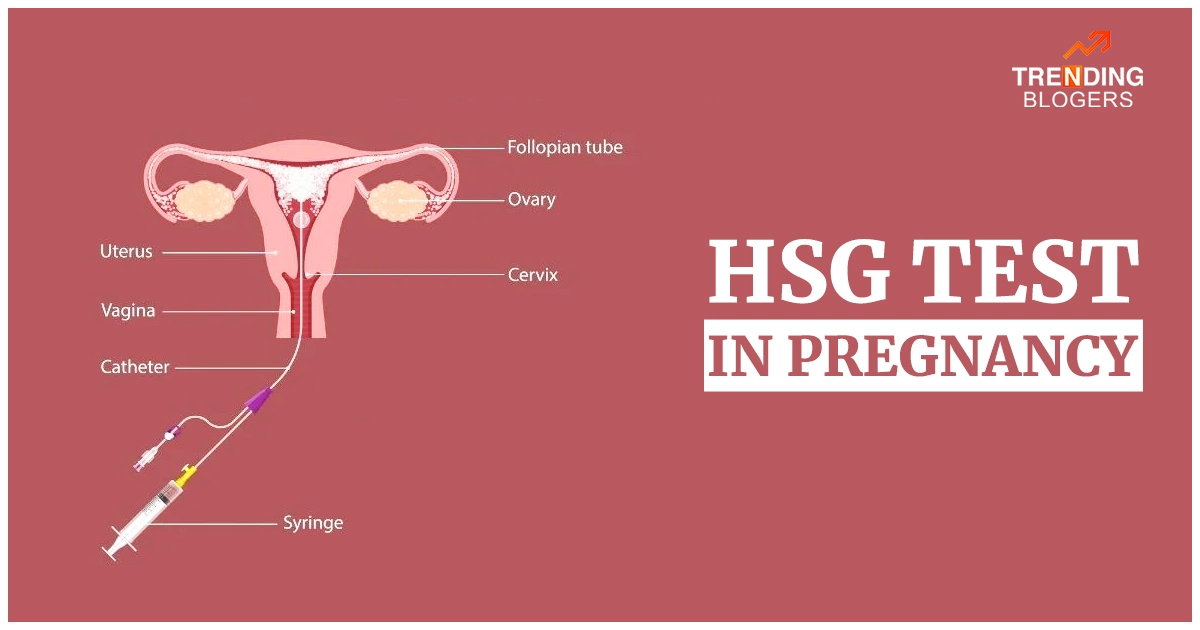If you are a woman trying to have a baby, and failing every time you know that the HSG test in pregnancy can help you conceive. To conceive, the uterus must be in good shape, your fallopian tubes must be open, and your ovaries need to develop an egg every month, which is known as ovulation.
If any of these parts fails to function properly, you may face some issues in conceiving. However, there is no need to worry because as soon as the problem is diagnosed, proper treatment will help you get pregnant.
What is the HSG Test?
A hysterosalpingogram or HSG test in pregnancy lets your doctor examine the inside walls of your fallopian tubes and uterus. This minor test is designed to offer information about the contour and shape of the uterus (endometrial cavity) or to document the availability of leiomyomata (fibroids), endometrial polyps, or scarring. Additionally, the test will determine whether the fallopian tubes are open or not. As the sperm can’t reach the egg if the fallopian tubes are blocked.
An HSG test or Hysterosalpingogram uses X-rays and a blue dye pregnancy test to detect fibroids polyps, scar tissue, and other growths that block the tubes or prevent egg fertilization from properly implanting in your uterus.
How to Prepare for the HSG Test?
Your doctor may recommend you take an over-the-counter pain reliever before an hour of your HSG test in pregnancy procedure. In some cases, they may also advise you to take an antibiotic.
There are some key factors to keep in mind when preparing for the HSG test:
- The procedure should take place between 7-10 days after the starting of your last menstrual time.
- A course of antibiotics might be prescribed by a doctor before the test.
- You can normally eat and drink on the day of the HSG test.
- It is recommended to take ibuprofen several hours before the test to lessen possible discomfort.
- Arrive 15-20 minutes before the procedure is scheduled.
How Painful Is HSG Test?
During HSG test in pregnancy, many females feel some cramps, especially when the blue dye is injected. Women with blocked fallopian tubes may feel intense pain. Ibuprofen (over-the-counter pain medicine) can help relieve this discomfort and pain.
You can also speak to your doctor about taking the medicine 30 to 60 minutes before the HSG test to reduce or prevent pain during the procedure.
How is the HSG Test Done?
HSG tests in pregnancy are done in a clinic or in a hospital. It is best to have this test done in the first half of your menstrual cycle (days 1-14). A reproductive endocrinologist, a radiologist, or a gynecologist can perform a Hysterosalpingogram test.
The HSG test is done in the following steps:
- Local anesthesia (pain relief) may be injected at the end of the cervix.
- The cannula (an instrument) is then inserted into the cervix.
- The fluid is placed through the tube or cannula into the fallopian tubes and uterus.
- After the X-ray machine takes the images, the cannula and speculum are removed.
What to Expect After A HSG Test?
You can expect to have a sticky vaginal discharge after the HSG test in pregnancy as some of the fluid spills out from the uterus. The fluid can also contain a tint of blood. You can use a pad for the vaginal discharge. Remember not to use a tampon.
You may also experience these symptoms:
- Slight vaginal bleeding
- Faint, dizzy, or sick to your stomach
- Cramps
What are the risks associated with HSG in Pregnancy?
The HSG test in pregnancy is relatively safe, but all tests have some risks. You may experience problems if you have an allergic reaction to the fluid dye. Injury to the uterus or pelvic infection is also possible. If you have any of the below-mentioned problems, talk to your doctor immediately:
- Foul smell during vaginal discharge
- Vomiting
- Fainting
- Heavy vaginal bleeding
- Severe abdominal cramps or pains
- Chills or fever
Chances of pregnancy after HSG
Generally, among subfertile women, there is a 17% chance of conceiving. However, HSG test in pregnancy can increase the chances to between 29% and 55% if they undergo tubal flushing with an oil-soluble contrast medium.
Final Line:
Hysterosalpingography or HSG test in pregnancy is an X-ray procedure that is used to view the inside of the fallopian tubes and uterus. It is used to see if the fallopian tubes are blocked or not. Also, it shows whether the inside of the uterus is normal in shape or size. There are several risks and factors to keep in mind if you are going to have an HSG test done.
FAQs
Ans. The most common side effect of HSG is pain. However, this pain is short-lived, but approximately 70% to 80% of women have reported mild to moderate pain during this procedure.
Ans. You are more likely to get pregnant in the three months after an HSG test, but that depends on why you aren’t able to get pregnant and what kind of contrast your technician has used.
Ans. In the HSG procedure, a dye fills your fallopian tubes and uterine cavity. The dye creates an outline of your fallopian tubes and uterus that stands out on an X-ray report. If the X-ray shows the dye flowing through your tubes, they are open, and if they meet a barrier, then it is blocked.
Also Read About: What is PCOS? Symptoms, Causes and Treatment




